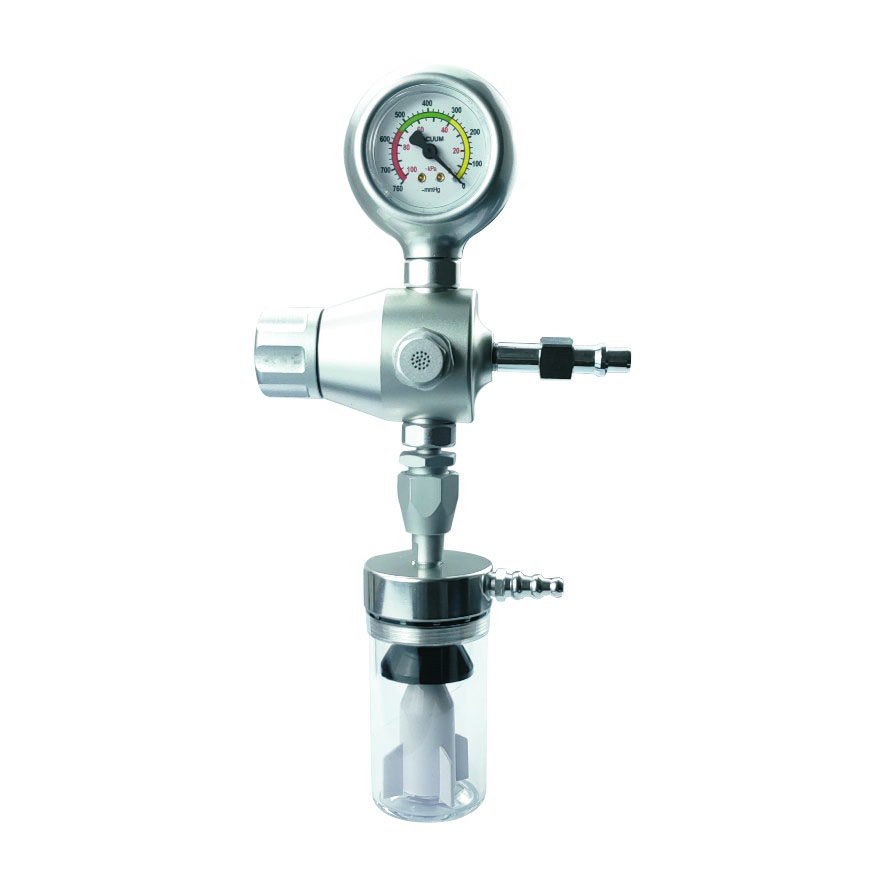
- English
- Español
- Português
- русский
- Français
- 日本語
- Deutsch
- tiếng Việt
- Italiano
- Nederlands
- ภาษาไทย
- Polski
- 한국어
- Svenska
- magyar
- Malay
- বাংলা ভাষার
- Dansk
- Suomi
- हिन्दी
- Pilipino
- Türkçe
- Gaeilge
- العربية
- Indonesia
- Norsk
- تمل
- český
- ελληνικά
- український
- Javanese
- فارسی
- தமிழ்
- తెలుగు
- नेपाली
- Burmese
- български
- ລາວ
- Latine
- Қазақша
- Euskal
- Azərbaycan
- Slovenský jazyk
- Македонски
- Lietuvos
- Eesti Keel
- Română
- Slovenski
- मराठी
- Srpski језик
- 简体中文
What is a Vacuum Regulator?
2023-07-13
What is a Vacuum Regulator?
A Vacuum Regulator is a device used to maintain the desired vacuum pressure in a system. There are many types of vacuum regulators, but the mechanical vacuum regulators discussed here work on the principle of force balance.

Two Vacuum Controls
There are two main types of vacuum control devices: Vacuum Regulators and vacuum breakers. This page aims to explain the different uses of each type and how they work.
Type 1: Vacuum Regulator
Vacuum regulators, such as the B3V from Gaolu, control the process vacuum by throttling the flow between the vacuum pump and the process. This type, often called a vacuum regulator, is actually a back pressure regulator because the pressure is controlled at the inlet port. The regulator closes to increase absolute system pressure (or decrease vacuum).
In the simplified example on the right, the vacuum regulator uses a spring-loaded diaphragm to control vacuum pressure. Process vacuum is on the underside of the diaphragm and atmospheric pressure is on top. The spring pulls up to provide a negative set point bias. When the process pressure becomes too low (the vacuum is too strong), the diaphragm lowers, restricting the airflow between the process and the vacuum supply pump, reducing the vacuum. As the absolute pressure increases above the set point (too low vacuum), the plunger rises and the gas flow between the process and supply pumps increases, increasing the vacuum.
A Vacuum Regulator is a device used to maintain the desired vacuum pressure in a system. There are many types of vacuum regulators, but the mechanical vacuum regulators discussed here work on the principle of force balance.

Two Vacuum Controls
There are two main types of vacuum control devices: Vacuum Regulators and vacuum breakers. This page aims to explain the different uses of each type and how they work.
Type 1: Vacuum Regulator
Vacuum regulators, such as the B3V from Gaolu, control the process vacuum by throttling the flow between the vacuum pump and the process. This type, often called a vacuum regulator, is actually a back pressure regulator because the pressure is controlled at the inlet port. The regulator closes to increase absolute system pressure (or decrease vacuum).
In the simplified example on the right, the vacuum regulator uses a spring-loaded diaphragm to control vacuum pressure. Process vacuum is on the underside of the diaphragm and atmospheric pressure is on top. The spring pulls up to provide a negative set point bias. When the process pressure becomes too low (the vacuum is too strong), the diaphragm lowers, restricting the airflow between the process and the vacuum supply pump, reducing the vacuum. As the absolute pressure increases above the set point (too low vacuum), the plunger rises and the gas flow between the process and supply pumps increases, increasing the vacuum.
Previous:Classification of oxygen inhalers


